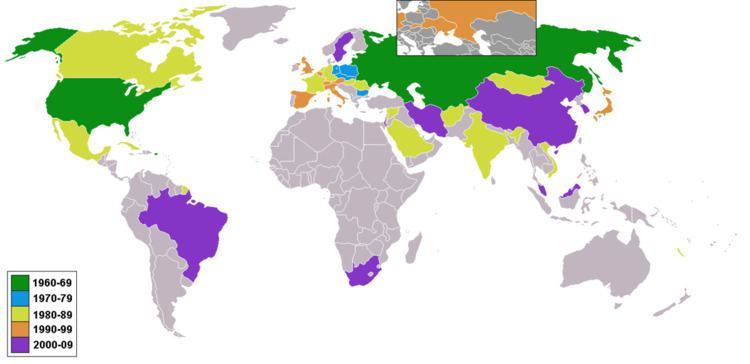 | ||
On May 14, 1981 Romania became the 11th country in the world to have an astronaut in space. That astronaut, Dumitru Prunariu is today's president of Romanian Space Agency.
Henri Coandă was a Romanian inventor and pioneer of aviation. He discovered the Coanda effect of fluidics.
George Emil Palade is a Romanian-born cell biologist who won the Nobel Prize in Physiology or Medicine in 1974 for his study of internal organization of such cell structures as mitochondria, chloroplasts, the Golgi apparatus, and for the discovery of the ribosomes. He also won the National Medal of Science in 1986.
George Constantinescu created the theory of sonics, while Lazăr Edeleanu was the first chemist to synthesize amphetamine and also invented the modern method of refining crude oil.
Several mathematicians distinguished themselves as well, among them: Acad. Gheorghe Țițeica, Spiru Haret, Acad. Grigore Moisil (multi-valued logics), Acad. Miron Nicolescu, Acad. Nicolae Popescu (category theory applications to rings and modules, and number theory; Popesco-Gabriel Theorem), George Georgescu (Łukasiewicz logic algebras in categories), Florin Boca (quantum groups and C*-algebras), Liliana Elena Popescu (category theory and computing/modelling theory), Madalina Buneci (groupoid and double groupoid representations) and Ştefan Odobleja; the latter is also regarded as the ideological father behind cybernetics.
Notable Romanian physicists and inventors also include: Horia Hulubei in atomic physics, Șerban Țițeica in theoretical physics, especially thermodynamics and statistical mechanics, Mihai Gavrilă in quantum theory, Alexandru Proca known for the first meson theory of nuclear forces and Proca's equations of the vectorial mesonic field, formulated independently of the pion theory of Nobel laureate Hideki Yukawa (who predicted the existence of the pion in 1947), Ştefan Procopiu known for the first theory of the magnetic moment of the electron in 1911 (now known as the Bohr-Procopiu magneton), Theodor V. Ionescu- the inventor of a multiple-cavity magnetron in 1935, a hydrogen maser in 1947, 3D imaging for cinema/television in 1924, quantum emission in hot plasmas and hot deuterium plasma beams for controlled nuclear fusion in 1969, Ionel Solomon known for the nuclear magnetic resonance theory in solids in 1955, Solomon equations, solid state physics, semiconductors in 1979, and photovoltaics since 1988, Mircea Sabău and Florentina I. Mosora known for their contributions to Nuclear Medicine, Petrache Poenaru, Nicolae Teclu and Victor Toma, with the latter known for the invention and construction of the first Romanian computer, the CIFA-1 in 1955. At the beginning of the second millennium, there was a boom in Romania in the number of computer programmers. Romania is reported to be among the countries with the highest number of computer programmers in the world. Some examples of successful software include RAV (Romanian AntiVirus) which was bought in 2003 by Microsoft for use in their development of Windows Defender; or BitDefender which is considered the number one antivirus software and internet security software at TopTenReviews.
Aviation
On March 18, 1906 Traian Vuia said he achieved a short hop at a height of about 1 foot. His flight was performed in Montesson near Paris and was about 12 meters long.
Henri Coandă exhibited the non-flying Coanda-1910 at the Second International Aeronautical Exhibition in Paris around October 1910, and built his first flying aircraft in 1911. He discovered the Coanda effect of fluidics.
